
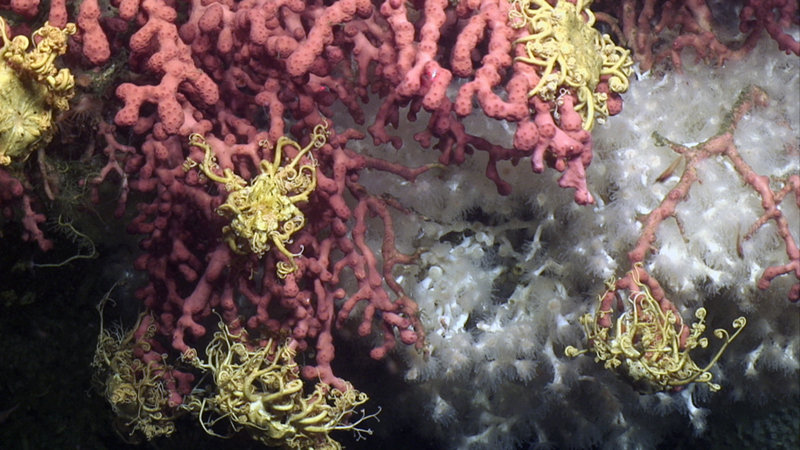
Several basket stars rest on a bubblegum coral in Norfolk Canyon, with a colony of the stony coral Lophelia pertusa in the background. Image courtesy of Deepwater Canyons 2013 - Pathways to the Abyss, NOAA-OER/BOEM/USGS. Download larger version (jpg, 1.5 MB).
Below is a collection of highlight images from the Deepwater Canyons 2013 expedition, some that have been previously featured on the website, some that have not.
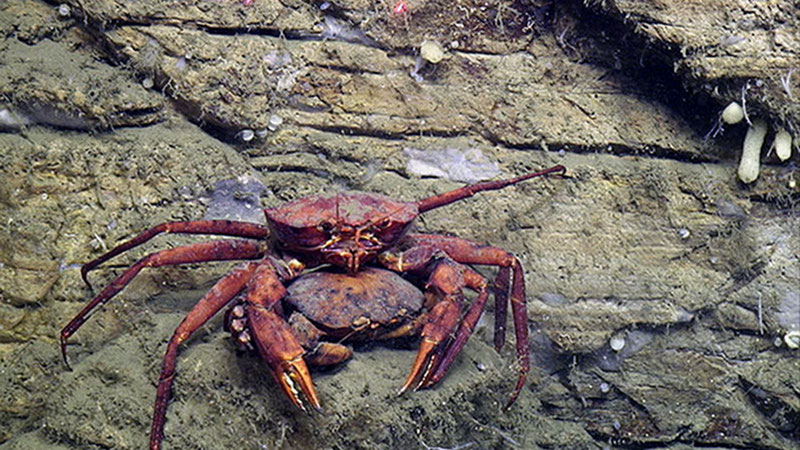
A pair of mating deep-sea red crabs rests on a ledge of the canyon wall. Image courtesy of Deepwater Canyons 2013 - Pathways to the Abyss, NOAA-OER/BOEM/USGS. Download larger version (jpg, 2.2 MB).
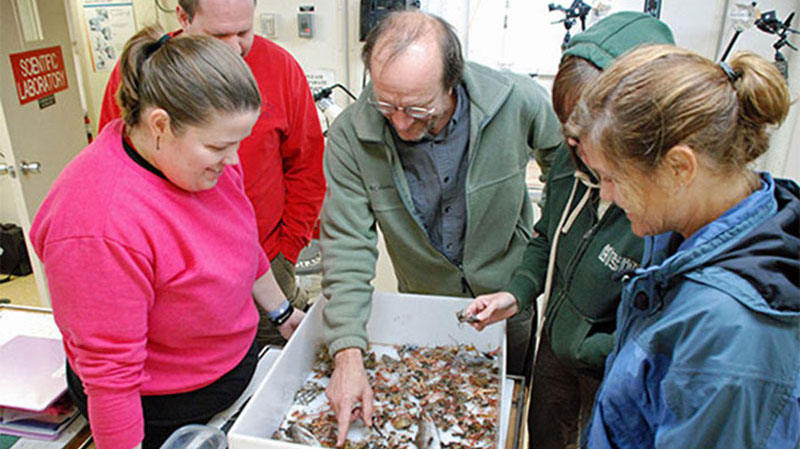
Steve Ross (center) identifies species found in a trawl, while (clockwise from left) Esprit Saucier, John Tomczuk, Katharine Coykendall, and Cheryl Morrison look on. Image courtesy of Deepwater Canyons 2013 - Pathways to the Abyss, NOAA-OER/BOEM/USGS. Download larger version (jpg, 860 KB).
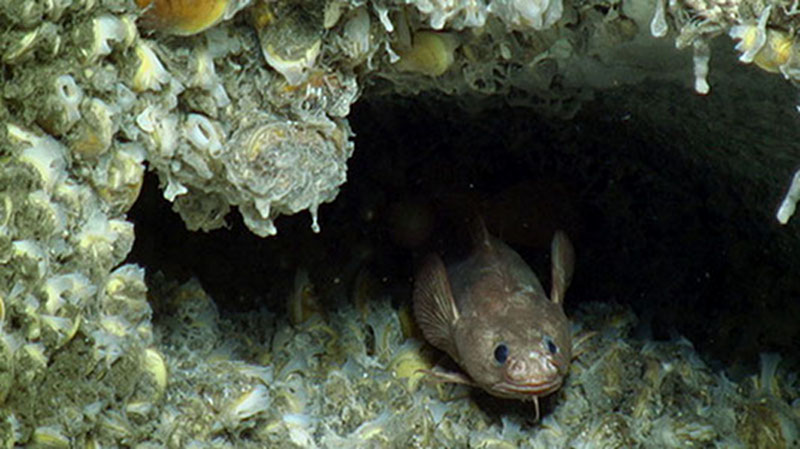
A Gaidropsarus rests under a ledge covered in live chemosynthetic mussels during the Mid-Atlantic seep dive. Image courtesy of Deepwater Canyons 2013 - Pathways to the Abyss, NOAA-OER/BOEM/USGS. Download larger version (jpg, 914 KB).
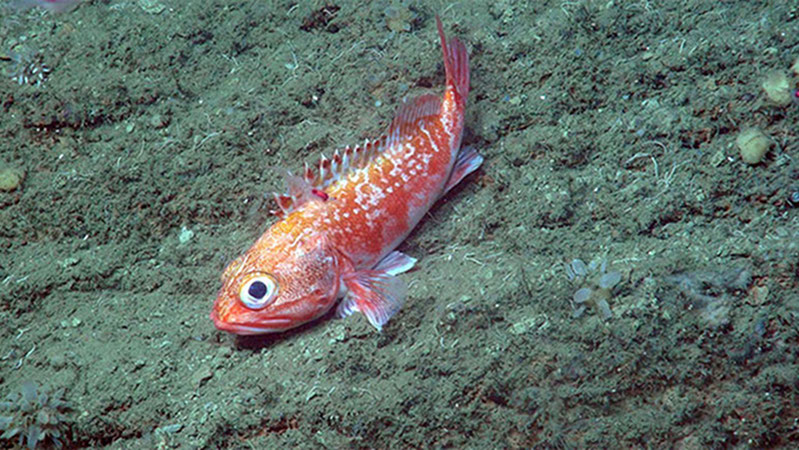
A blackbelly rosefish perches along the canyon wall. Image courtesy of Deepwater Canyons 2013 - Pathways to the Abyss, NOAA-OER/BOEM/USGS. Download larger version (jpg, 10.5 MB).
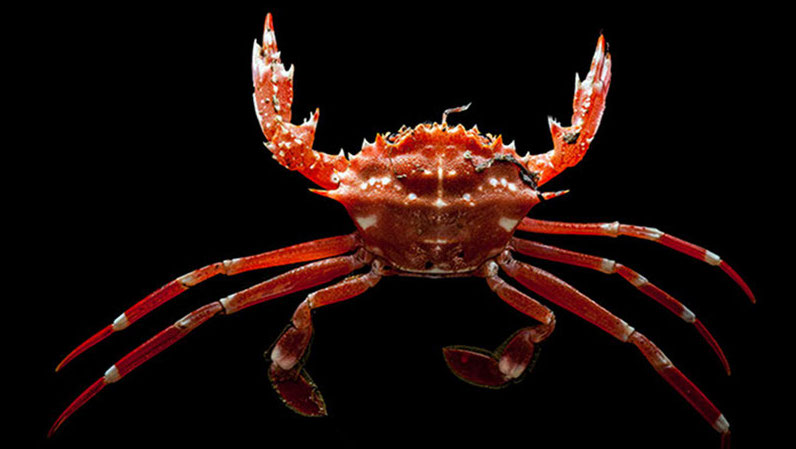
A crab collected during an evening trawl is photographed on a black background to help with identification and scale measurements. Image courtesy of Art Howard, Deepwater Canyons 2013 - Pathways to the Abyss, NOAA-OER/BOEM/USGS. Download larger version (jpg, 4.4 MB).
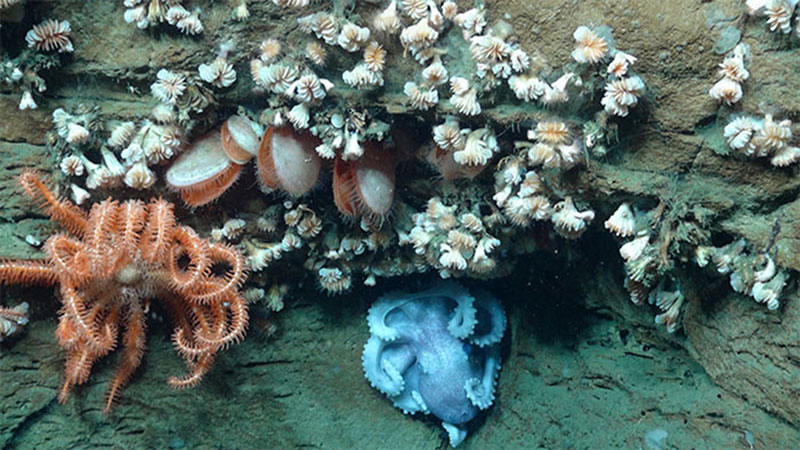
On this project we encountered many species of invertebrates living together on the steep canyon walls. Image courtesy of Image courtesy of Deepwater Canyons 2013 - Pathways to the Abyss, NOAA-OER/BOEM/USGS. Download larger version (jpg, 1.2 MB).
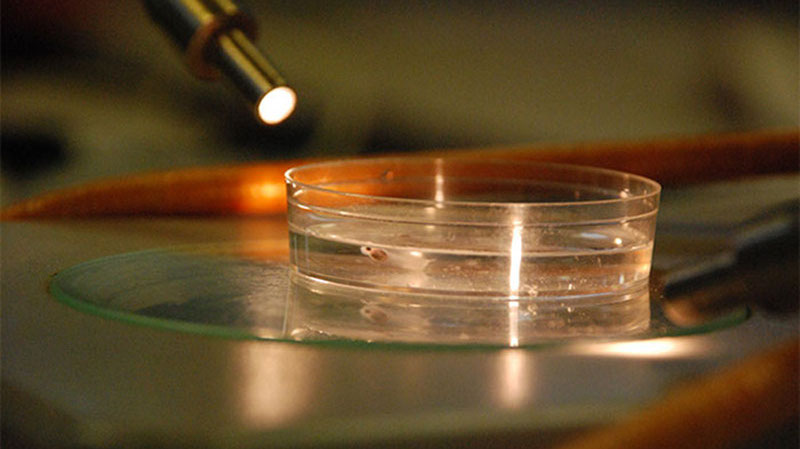
Minutes-old larval fish under the microscope. Image courtesy of Image courtesy of Deepwater Canyons 2013 - Pathways to the Abyss, NOAA-OER/BOEM/USGS. Download larger version (jpg, 5.3 MB).
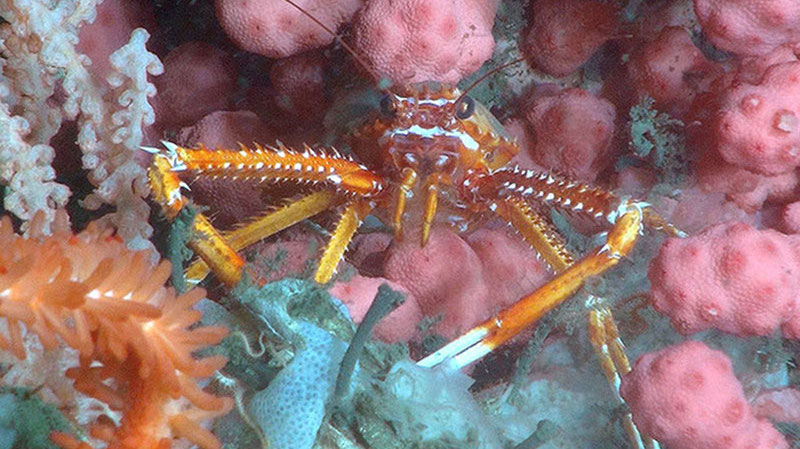
Deep-sea coral communities can be very diverse. Here a squat lobster rests among a bubblegum coral, a red tree coral, and a sponge. A brisingid seastar arm is also visible. Image courtesy of Image courtesy of Deepwater Canyons 2013 - Pathways to the Abyss, NOAA-OER/BOEM/USGS. Download larger version (jpg, 1.7 MB).
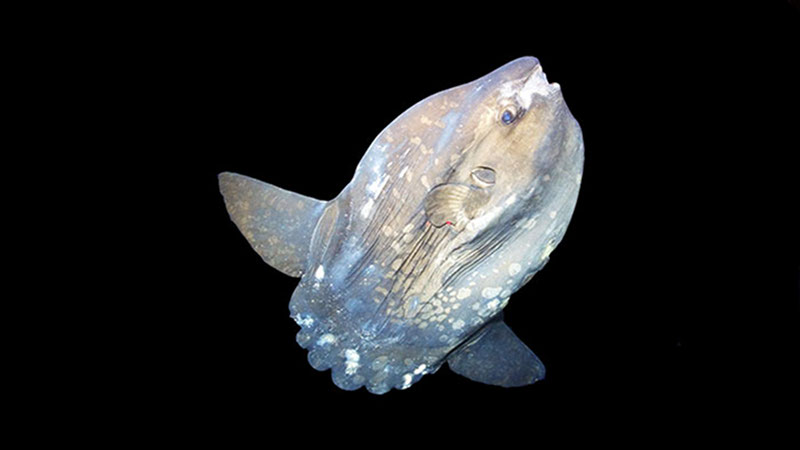
A Mola mola, or ocean sunfish, stopped by for a visit during one of the dives of the Pathways to the Abyss cruise. Image courtesy of Image courtesy of Deepwater Canyons 2013 - Pathways to the Abyss, NOAA-OER/BOEM/USGS. Download larger version (jpg, 2.9 MB).
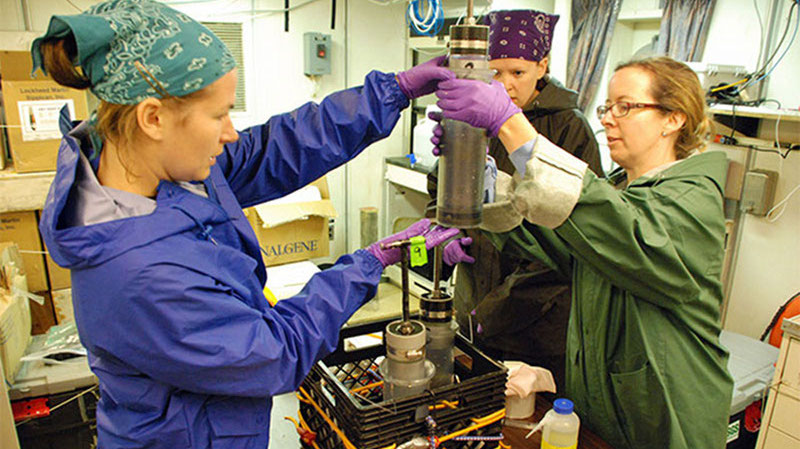
U.S. Geological Survey scientists prepare to extract a sediment sample from one of the push cores deployed by the Jason II remotely operated vehicle. Image courtesy of Image courtesy of Deepwater Canyons 2013 - Pathways to the Abyss, NOAA-OER/BOEM/USGS. Download larger version (jpg, 745 KB).
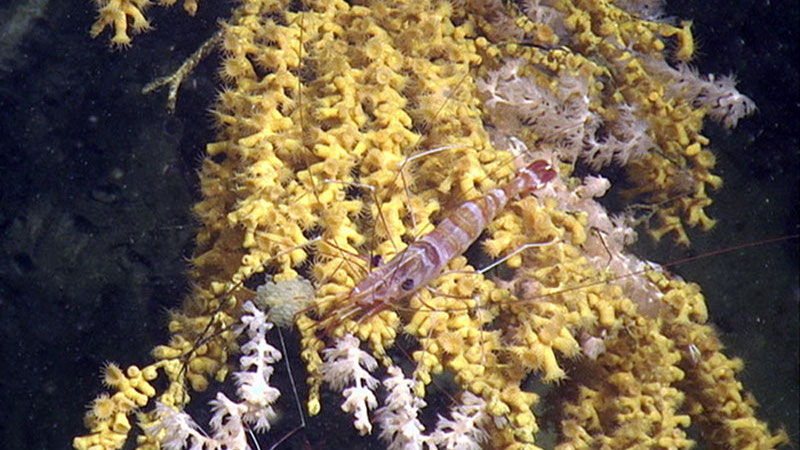
A shrimp rests next to an egg mass that has been deposited on the coral branch. The yellow colony is a zoonthid that is overgrowing the white octocoral colony. Image courtesy of Image courtesy of Deepwater Canyons 2013 - Pathways to the Abyss, NOAA-OER/BOEM/USGS. Download larger version (jpg, 896 KB).
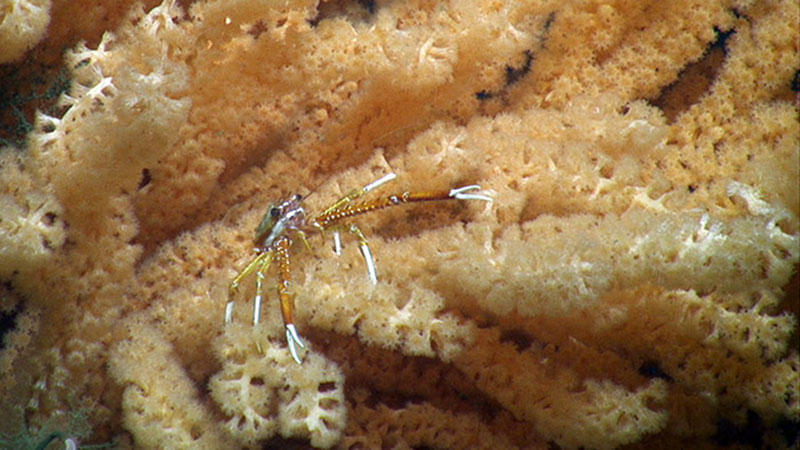
A squat lobster takes up residence on a deep sea coral (Primnoa species). Image courtesy of Image courtesy of Deepwater Canyons 2013 - Pathways to the Abyss, NOAA-OER/BOEM/USGS. Download larger version (jpg, 1.5 MB).
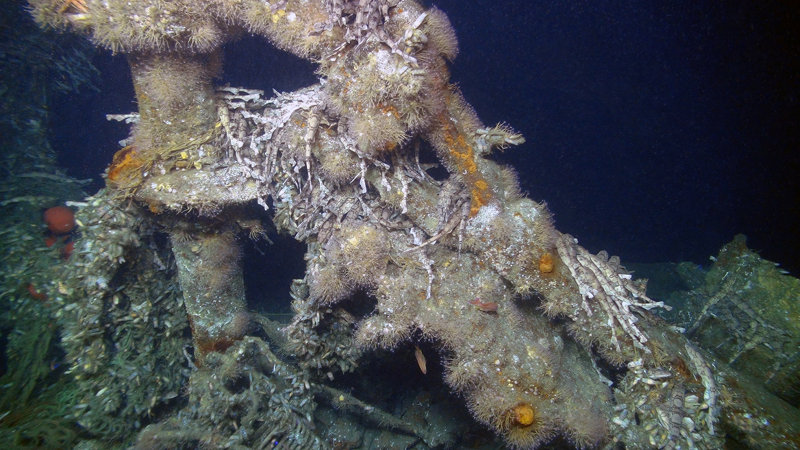
Hundreds of catsharks, or chainlink dogfish, rest on one of the Billy Mitchell fleet shipwrecks. The shipwreck has also been occupied by colonies of anemones, starfish, and hydroids. Image courtesy of Image courtesy of Deepwater Canyons 2013 - Pathways to the Abyss, NOAA-OER/BOEM/USGS. Download larger version (jpg, 8.9 MB).
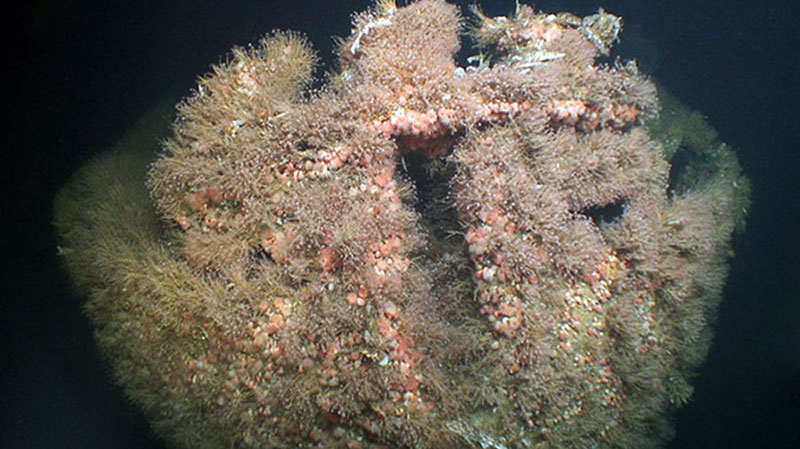
Covered in hydroids, anemones, seastars, and catsharks, shipwrecks are often more biologically diverse than the surrounding areas. Shown here is the World War I cruiser, Frankfurt, which was sunk as part of the Billy Mitchell fleet in 1921. Image courtesy of Image courtesy of Deepwater Canyons 2013 - Pathways to the Abyss, NOAA-OER/BOEM/USGS. Download larger version (jpg, 2.2 MB).
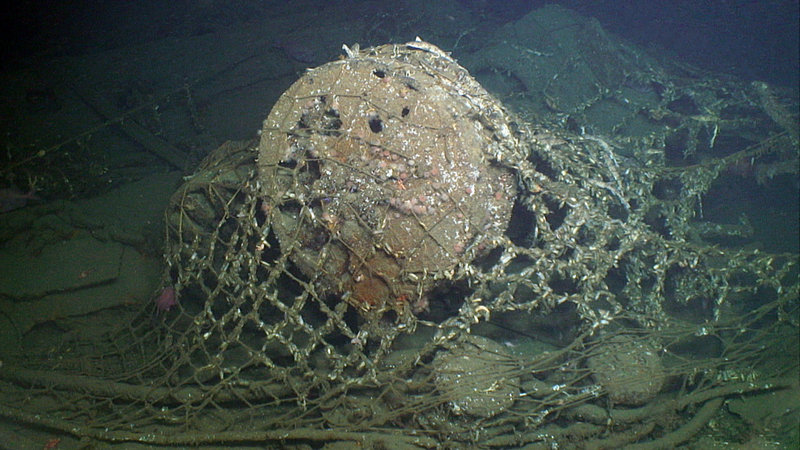
The capstan of a German destroyer is covered and damaged by derelict fishing gear. Image courtesy of Image courtesy of Deepwater Canyons 2013 - Pathways to the Abyss, NOAA-OER/BOEM/USGS. Download larger version (jpg, 2.0 MB).
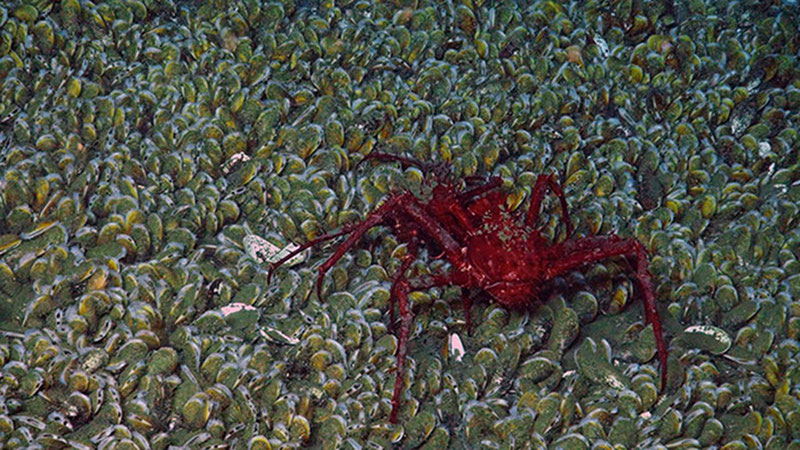
A lithodid crab seen on the extensive mussel bed at 1,600 meters. Image courtesy of Image courtesy of Deepwater Canyons 2013 - Pathways to the Abyss, NOAA-OER/BOEM/USGS. Download larger version (jpg, 1.1 MB).